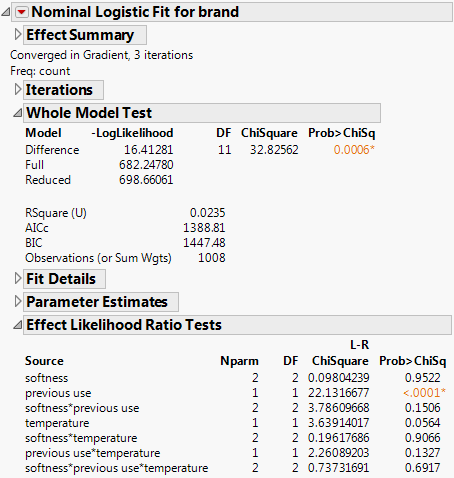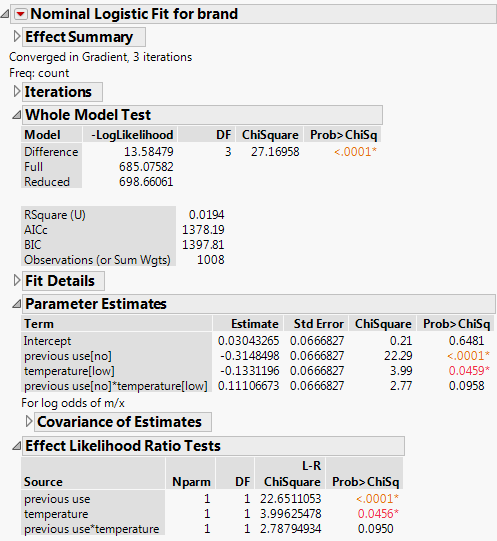Example of Using Effect Summary for a Nominal Logistic Model
A market research study was undertaken to evaluate preference for a brand of detergent. See Ries and Smith (1963). The results of the study are in the Detergent.jmp sample data table. The model is defined by the following:
• the response variable, brand, with values m and x
• an effect called softness (water softness) with values soft, medium, and hard
• an effect called previous use with values yes and no
• an effect called temperature with values high and low
• a count variable, count, which gives the frequency counts for each combination of effect categories
The study begins by specifying the full three-factor factorial model.
1. Select Help > Sample Data Library and open Detergent.jmp.
2. Select Analyze > Fit Model.
3. Select brand from the Select Columns list and click Y.
Because you specified a nominal response variable, the Personality changes to Nominal Logistic.
Because brand is a Nominal column with only two levels, the Target Level option appears. This option enables you to specify the response level whose probability you want to model.
4. From the Target Level list, select m.
5. Select count and click Freq.
6. Select softness through temperature and click Macros > Full Factorial.
7. Click Run.
Figure 11.9 Nominal Logistic Fit for Three-Factor Factorial Model
The Whole Model Test report shows that the three-factor full factorial model as a whole is significant (Prob>ChiSq = 0.0006).
The Effect Likelihood Ratio Tests report shows that the effects that include softness do not contribute significantly to the model fit. This leads you to consider removing softness from the model. You can do this from the Effect Summary report.
8. In the Effect Summary report, select softness*previous use through softness under Source and click Remove.
The report updates to show the two-factor factorial model (Figure 11.10). The Whole Model Test report shows that the two-factor model is also significant as a whole.
Figure 11.10 Nominal Logistic Fit for Two-Factor Factorial Model
You conclude that previous use of a detergent brand and water temperature have an effect on detergent preference. You also note that the interaction between temperature and previous use is not statistically significant, so there is no evidence that temperature depends on previous use.

